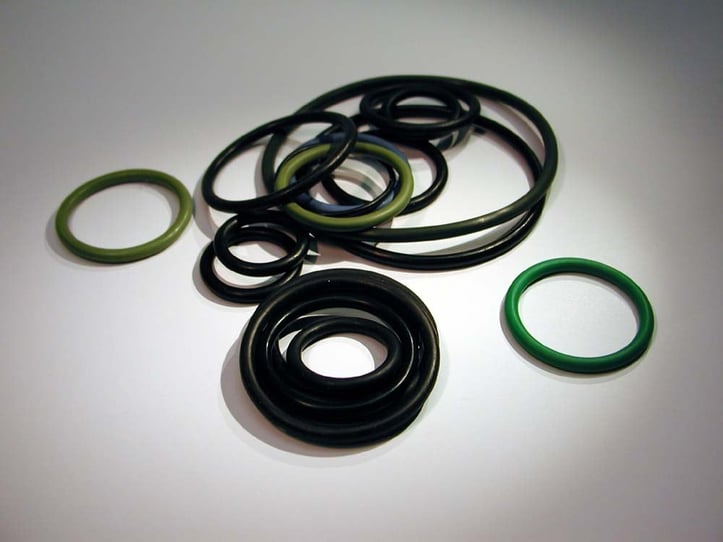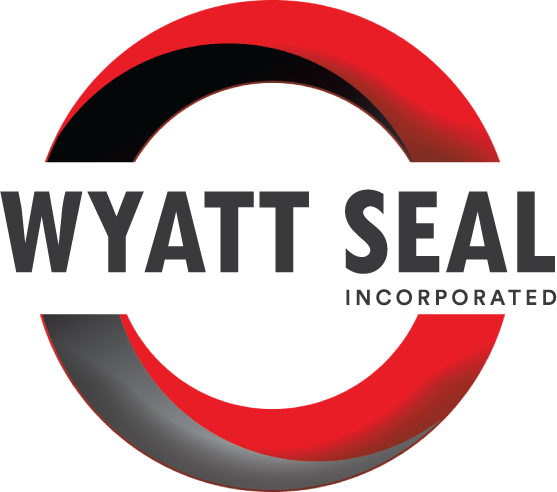
Central to the effectiveness of O-rings is the concept of "squeeze" – a measurement of the deformation they undergo when compressed against their mating hardware. The degree of squeeze directly influences the tightness of the seal and, consequently, its performance. However, selecting the optimal squeeze ratio isn't a one-size-fits-all affair. Various factors come into play, from the properties of the mating hardware to the specific material composition of the O-ring itself.
What is O-RING SQUEEZE?
Expressed as a percentage of free-state, cross-sectional thickness, “squeeze” is actually a measurement of the amount of deformation to the seal when it comes in contact with its mating hardware. O-rings have inherent elasticity, and it’s this elasticity resulting from contact that blocks the flow of gasses, liquids, and other substrates between the seals.
-min.png?width=2210&height=1973&name=O-Ring%20Squeeze%20Diagram%20(Must%20Credit%20FNST)-min.png)
-min.png?width=2102&height=548&name=O-Ring%20Squeeze%20Formula%20(Must%20Credit%20FNST)-min.png)
%20(002)-min.png?width=2728&height=280&name=O-Ring%20Squeeze%20Logos%20(Must%20Credit%20FNST)%20(002)-min.png)
Images provided by our partners at Freudenberg-NOK Sealing Technologies.
SELECTING THE RIGHT SQUEEZE RATIO
In general, the higher the percentage of “squeeze,” the tighter the seal. That doesn’t mean, however, that the highest squeeze ratios are always necessary (or even best) for every application. Other factors to consider include:
- Mating Hardware Stress: Increasing the squeeze’s compressive force too intensely can potentially lead to damage to the mating hardware, depending on materials. This is especially important for high-repetition seal applications.
- Friction and Wear: The higher the squeeze, the faster a seal will wear out. More squeeze inevitably creates more friction which can have a direct impact on how well the equipment in question performs. O-ring damage caused by pinching can also be a side effect of too much friction, leading to a loss of seal effectiveness over time.
- Compression Set: The force exerted by the squeezed elastomer will gradually lessen over time. Once the O-ring retains its squeezed shape even without being squeezed, it is susceptible to losing its ability to seal properly. The term “compression set” is a measure of this occurrence; by the time an O-ring reaches 80% compression set, it’s likely less effective at sealing. Higher squeeze levels typically take longer to reach this 80% threshold.
- Material: An O-ring’s material drastically impacts its relationship with squeeze. Nitrile rubber, for example, can reach far higher squeeze levels than Perfluorinated elastomers, which may rupture when squeezed too hard.
Understanding the importance of O-ring squeeze is crucial for achieving effective sealing. As discussed, the degree of squeeze directly impacts the tightness of the seal, affecting its performance in blocking gases, liquids, and other substances. While selecting the right squeeze ratio may seem complex, considering factors like mating hardware and O-ring material helps in making informed decisions. By mastering O-ring dynamics, engineers can ensure superior sealing solutions for various applications. Embracing the science behind O-ring squeeze enhances sealing efficiency and promotes innovation in sealing technology.
If you need help navigating this process to find the right seal for your project, talk to a seal expert at Wyatt Seal. We’ve spent 50 years building relationships with seal manufacturers worldwide to offer you access to thousands of seals, gaskets, O-rings, and other specialty items for any application.

